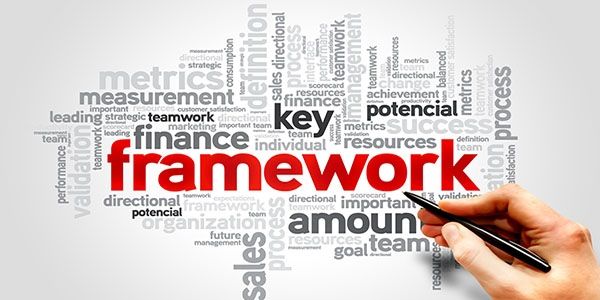OUTSIDE THE BOX Forum – HPM Framework Professional Development Plan
In the previous 6 chapters I have suggested several scenarios where a professional with some combination of PM and BA skills is needed.
I searched the major players on the internet for the PM/BA positions they list. The results were surprising and are reported below. With all of the above taken into account, what are the next steps? Where do BA/PMs and PM/BAs come from? What training and education are in place to support their development? What about career paths and the training and education needed to support successful career growth? This chapter presents a comprehensive career and professional development planning model.
In this final article we will look at how the PM/BA Landscape is used as the foundation of a Career and Professional Development Program for individuals and their managers as well as how the organization can support these efforts.
What is a Professional Development Program?
A good pdp will answer the following questions:
where am i?
where do i want to go?
how will i get there?
how am i doing?
I’ll call this plan a Professional Development Program (PDP).
The PDP planning horizon usually spans a full year with reviews on a quarterly basis or as needed. The temptation is to schedule them in conjunction with an annual performance review process. That is not a good idea. In practice it is usually better to keep the PDP and performance review processes six months out of phase with one another. Having a performance evaluation and career planning session done concurrently isn’t advisable. The performance review is not safe harbor for the individual. In a performance review they are under pressure and in a defensive position. In a career planning session they are in dream mode and don’t need any pressure imposed on them from some other activity imposed upon these sessions.
Where am I?
This part of your PDP defines three cells:
The highest level cell whose skill profile you exceed
The most important part of this description is your skill/proficiency profile. These are not just with reference to the skills needed or used in carrying out the tasks and assignments of your current position. Rather the skills profile covers all skills. Just because your skills profile exceeds the required skills profile for say the Senior Manager PM/ba cell doesn’t mean your current position occupies that cell.
The cell of your current position title
You may not be in the best fit cell. In the final analysis it is a matter of supply versus demand and the nature of your assignment. For example, you might have the appropriate skill profile for a Senior Manager PM/BA position but there are no openings for such a position. Instead you are in a position in the Manager PM/BA cell. The more important question is where do you want to go and that is answered in another part of your PDP.
The cell of your current assignment
Continuing with the previous example your position title is in the Manager PM/BA cell. Depending on a variety of circumstances you could be assigned to a position in anyone of the following cells: Senior Manager PM/BA, Manager PM/ba, Manager PM/BA, Senior Manager BA/PM, Senior Manager BA/pm, Manager BA/PM or Manager BA/pm. So that the circumstances surrounding your current assignment could be such that you are actually occupying a position in a cell whose profile you greatly exceed or don’t meet for that matter.
Where do I want to go?
While it may seem trite, I like to ask everyone that comes to me for career advice “What do you want to be when you grow up?” The answers are amusing:
I don’t want to grow up.
Employed.
I want your job.
In all seriousness this is a basic question that must be answered before any career plan can be built. The answer isn’t a lifetime decision either. Rather it is the place you would like to be professionally based on what you currently know and understand and what the business situation is likely to be as your career and job preferences mature. You can change your mind every Tuesday if you like. The important thing is that you have a career goal and a plan to work towards it.
The process for answering the question is through a relaxed conversation with one of your mentors. Your manager should be one of your mentors. Your manager is your best source for understanding where the opportunities lie for your short-term career prospects. And you should seek them out for that advice. Longer term prospects are best commented on by those who have a strategic perspective on the future and where the staffing opportunities lie. One of your mentors might be a person who occupies the position you seek as a career goal. You should seek their advice for that.
Both your manager and any senior level manage whose advice you seek should be able to translate your career goals into a cell or sequence of cells that form a career path eventually leading to your ultimate career goal.
How will I get there?
At this point you know where you are (the cell you are in) and where you want to go (the cell of your career goal). So your next step is to build a career path for getting there. In fact you could build several career paths that all lead to the same destination. One of those many career paths will be the one you pursue in greater detail.
And that is the answer to this question. The answer however will be given one step at a time. That step will be the PDP for the next planning cycle – probably 12 months. During that time you will put a four-part PDP plan together.
How am I doing?
Your PDP should be written so that it can be used to track progress. Just like you would develop an acceptance test in the form of a checklist so also should your PDP performance tracking be in the form of a checklist. These checkpoints should be done quarterly.
In addition to tracking progress against the plan on a quarterly basis so also should you consider revising your plan on a quarterly basis. These could be as simple as taking advantage of an opportunity that wasn’t known at the last checkpoint and which you would like to include in your PDP. Or they could be a little more comprehensive and focus on changing your career path or even your career goal.
[widget id=”custom_html-68″]
PDP Contents
A PDP is the heart of every career and professional development effort. Your organization has a major role to play in PDP implementation and support and that is discussed in the next section. A PDP should contain a long-term career goal and a short-term career goal. The short-term career goal should cover the next planning horizon – most likely annual. It will be a detailed description of what is planned in order to achieve the short-term goal. The long-term career goal will be less detailed.
By way of introduction I think that a good PDP is a plan developed by you and your coach/mentor/manager and consists of the four parts briefly defined below.
Every position in every cell will have a minimum skill and competency profile required for the position. These are the target profiles your PDP will aim for as you plan your skill development activities and the resulting career advancements. To qualify for a specific position the individual must first define the skill and competency gap between their current and desired position and then build a PDP using the four components described below to remove that gap. That would position the individual to move to the desired position when a vacancy arises. Your mentor(s) should be available to help with plan development and other career advice.
Experience Acquisition
This part of the PDP describes the acquisition of further experience mastering the skills and competencies needed in the current position. The further experience is also related to qualifying for entry into a higher level position in the same or a neighboring sector. There may be certain areas that should be the focus of that additional experience – perhaps an area of noted weakness that needs improvement. So this is a “do more of the same” part of the PDP with the above considerations taken into account.
Here are two examples of Experience Acquisition as they might be represented in the PDP
- Seek out project assignments that have more of a business analysis focus than you have been doing.
- Support professionals who are more senior to you and have a business analysis skill that you need to improve to better meet current position requirements.
On-the-job training
First of all training does not imply attending a formal course. Training can be very informal. For example, just attending an activity facilitated by an expert in the skill area of interest and observing what happens. Watching how someone does something is a learning experience.
On-the-job training is undertaken to increase the proficiency of skills and competencies needed to improve performance in the current position. If performance in one or more skill areas is below a nominal performance level, then training may be required to bring that performance up to acceptable levels. Training need not be expensive and certainly does not have to be time consuming. There are several opportunities right under your nose. For example,
- Offering to help a colleague with one of their tasks to improve your skill to perform that task on your assignment
- Attending a workshop to improve a current skill you are using on your job
- Volunteering to join a project team that will further challenge you to take your skills to the next level
You just have to pay attention and be on the outlook for them. For example, John is a BA/pm Manager and has just been assigned PM for the Order Entry/Fulfillment Process Improvement Project. John has had limited experience managing improvement projects and he wasn’t too confident he could handle this project. There had been several projects in the past to improve the Order Entry/Fulfillment Process with little success to report. John’s career goal was to become a BA/PM Senior Manager and eventually a Consultant to the Order Entry/Fulfillment Process. So he asked Michelle, a PM/BA Senior Consultant to help him improve his project management skills from the perspective of the BA on a process improvement project. Here are two examples of On-the-job Training as they might be represented in the PDP:
- Look for opportunities to observe and support the project management work of BA/PM professionals
- Take courses (on or off site) to enhance the project management skills required of your current position
Off-the-job training
The purpose of off-the-job training is to increase skill proficiencies to the level needed to qualify for the next position in your career plan. In other words it is not relevant to meeting any current skill proficiencies associated with current job requirements.
For example, Harry is a BA Task Leader. His long-term career goal was to be a BA/PM Consultant. His short-term career plan was to become a BA/pm Associate Manager. Since his project management skills are very limited he needs to get started on them. He is good friends with Larry who is a BA/PM Senior Manager. Larry is respected among the BA community as one of the best project planners and Harry felt that Larry had a lot to offer him. Larry was more than willing to be Harry’s mentor and also to help him learn project planning. Because he was so well respected for his project planning skills Larry was in high demand and always very busy. Harry approached Larry and asked him if he could help Larry out in some way in return for which he could observe Larry. To Larry that offer was a no-brainer and so he took Harry under his wing. Harry shadowed Larry and began learning project management from the ground up. When Larry retired Harry took his place as a BA/PM Senior Manager and one of the organization’s best planners. Harry was now one step away from his long-term career goal. Here are two examples of Off-the-job Training as they might be represented in the PDP:
- Take courses (on or off site) to add business analysis skills that will be required by your targeted position in the PM/BA Associate Manager cell
- Look for opportunities to observe and support a professional practicing the business analysis skills you will need in your targeted position.
Professional activities
This part of a PDP addresses participation in activities that are not necessarily related to any current or near-term career goal. Rather they are just experiences that relate to your long-term professional interests whether they are project management or business analysis related. They aren’t necessarily directly related to these either. They might be related to better understanding your company’s business. For example,
- Reading the literature on your profession or your company’s lines of business
- Better understanding your competitors and how you might leverage your project management and/or business analysis expertise to improve your company’s market share
- Involvement in PMI and/or IIBA at the national and chapter level
- Conference attendance and networking with other PM and BA professionals
Here are two examples of Professional activities as they might be represented in the PDP:
- Read books and journal articles on topics relevant to your targeted position in the PM/BA Associate Manager cell
- Attend meetings and conferences offering seminars and workshops relevant to your targeted position in the PM/BA Associate Manager cell









